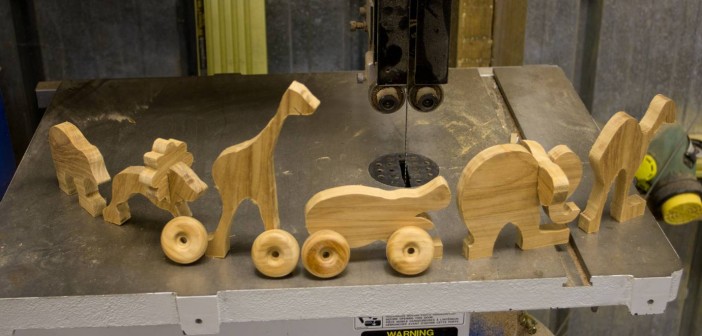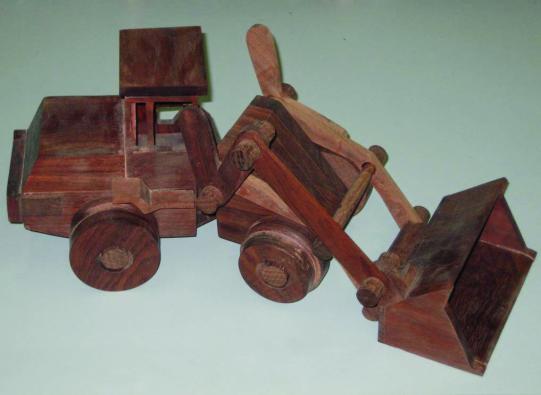
There are so many different reasons someone might catch the woodworking bug. It might be some big single epiphany, but in many cases it will be a combination of a number of small triggers.
I believe the toys you have as a kid can play a big part: it is the first experience of just how real timber products are. They have presence, they are wonderfully tactile, and they are not overloaded with bells, whistles, electronics, and other imagination-denying features. The best kids’ toys are wooden, and even better if homemade! There is nothing more satisfying that watching a child genuinely enjoying and playing with a toy you have made for them.
Toys don’t have to be complicated – simple shapes, solid colours and vivid imagination always achieve excellent results. Most commercial (plastic) toys have become very complex, but I really don’t think kids have actually changed that much. We teach them their expectations.
Impressive manufacturing
More complicated toys are still possible, without detracting from imaginative play, and teach finer motor skills, along with encouraging experimentation (as with the bulldozer above).
The classic block
Something as simple as wooden blocks is easy to make, and last for years. For young children, they are a tactile experience and the child learns to hold, stack, throw (and knock down!) block towers. They can be left as natural wood, or coloured with foodsafe dyes, and/or finished with foodsafe finishes. As the child ages, the blocks remain useful, becoming buildings, towns for make believe games.
Learning at home
Making a blackboard is another easy project, and a variety of joinery methods can be used, from pocketholes, biscuits, even glue and screws. The blackboard itself is made by painting a sheet of MDF with blackboard paint, available from your local hardware store.
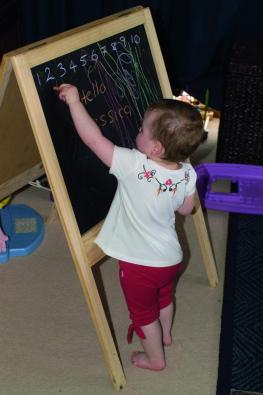
Keep on track
Using train track router bits can give a basic train set can a substantial boost, at a fraction of the price. A number of young friends have received 10-15 metres of additional Thomas the Tank Engine compatible track, leading to whole lounge rooms being taken over with substantial railway yards! Unlike commercial sets, you can also produce bridging pieces that allow otherwise incompatible track types to be joined.

Cars and trucks and trailers
A small bandsaw can be used to produce a range of wooden vehicles. Different shapes become cars, buses, trucks in the imagination of the young.
Windows need be nothing more than holes drilled as appropriate for the vehicle.
A toy wheel cutter (which is mounted in the drill press) can quickly produce a large stack of wheels, without the cost of purchasing commercially produced versions. You can also use a holesaw to produce a more basic version.
With dowels for axels, exhaust pipes, and lights (police vehicles etc), and holes drilled for headlights, the range of vehicles is only limited by your imagination, and they will come to life in the imagination of the child.
Fighting the plastic fantastic
My last batch of toy kitchens is one such example of fighting back. At first glance it may look like these came out of a toy catalogue, but the devil is in the details.
The colourful creation you can see in this article was loosely based on some of the toy catalogue designs. It quickly became something more as individual details were worked out and created. Knobs made from toy wooden wheels, engraved stove-top elements leaving a tactile surface that is still flat when used as a work surface. A shelf on the fridge door for milk and bottles, and a second shelf with holes as an egg store. You can continue adding as many details as you want, but at the end of the day, it is the imagination of the child that will flesh out the kitchen, not an attempt to recreate reality (leave that for the plastic fantastic, all singing, all dancing versions commercially available).
This solid timber version was made without reference to any previous design, and was particularly satisfying. It has details such as a solid wooden sink, made from laminating layers of timber, a wooden tap and wooden-wheel versions of knobs and taps, and an oven door which has a handle long enough to reach the floor, in case the child decides to stand on the door, rather than just open it!
It is up to us to try to keep alive the traditional toys, rebelling against the plastic generation.
Looking for a sign
Your child’s learning institution (kindergarten, school etc) can also benefit from the output of your workshop.
Road signs are one such example.
Using a combination of tablesaw and router, the signs were carved out of solid timber, making them resistant to the weather (if, and when left outside), easy to paint, and repair.
Puzzling dilemma
For older kids, especially the dinosaur-crazy ones, plans are available to cut out models with fantastic results. They can be used as 3D jigsaw puzzles, or glued together and played with, or as room decoration. And there’s nothing stopping you using larger sheet goods (MDF for example), and producing ones ¼ size (or larger)!
I keep threatening to producing a number and decorating the yard for Christmas.
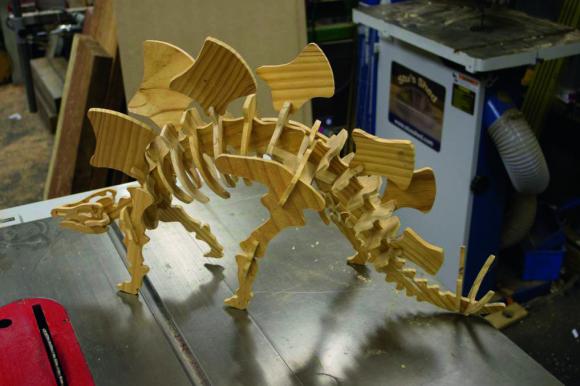
A trip to the circus
For the younger ones, a circus pull-along is a great toy. This one is still a work-in progress. I tend to try to produce wooden toys that have no metal parts, so wooden wheels and dowels for axles and hinges is the order of the day.
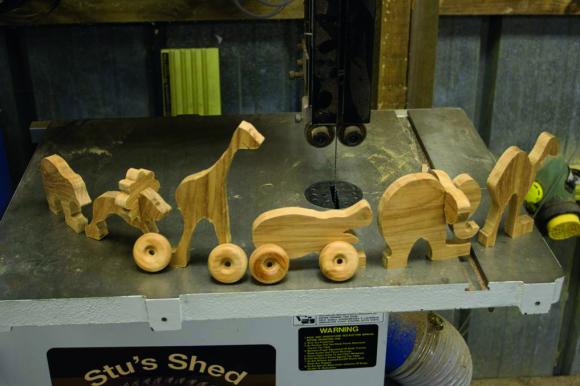
Sourcing inspiration
Coming up with ideas for toys does not have to be difficult. So long as you are not producing toys for commercial reasons, there is nothing stopping you perusing the various toy catalogues for ideas. Following a plan, the step by step instructions provided in books on toy-making is fine, but I don’t get anywhere near the same satisfaction that come from developing the method myself. Even when sourcing the idea from a catalogue, the end result often doesn’t end up looking much like the inspiration.
Material for a wooden toy: $5 – $50
Time to produce a toy: an hour – a weekend
A happy child (especially your own): $Priceless
For everyone else… there’s mass production.

